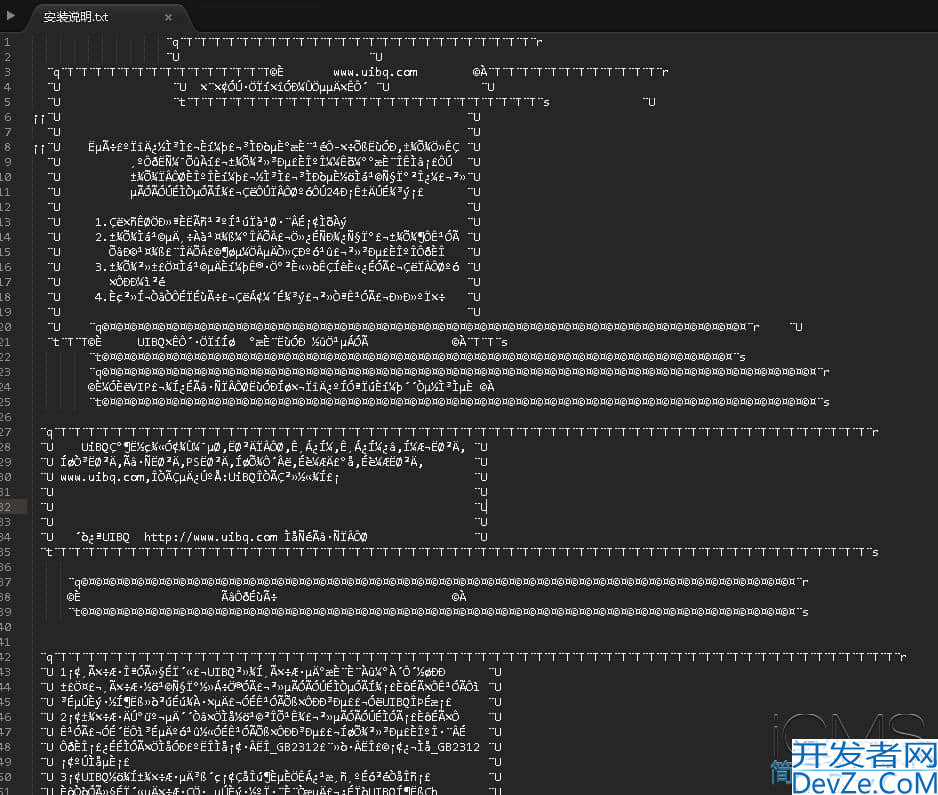spring schedule任务调度方式
目录
- spring schedule任务调度
- 查找 @Scheduled 注解
- 封装任务
- 注册任务
- taskScheduler
- 任务执行
- 总结
spring schedule任务调度
启用 Spring 的任务调度功能需要使用@EnableScheduling注解,该注解会引入ScheduledAnnotationBeanPostProcessor。
beanprocessor是一个bean后置处理器,负责扫描带有 @Scheduled 注解的方法,将其转换为可执行的任务,并根据注解的属性将其注册到 TaskScheduler 中进行管理和执行。
这样,开发者只需要在普通 Spring Bean 的方法上添加 @Scheduled 注解,Spring 就能自动地按照指定的时间策略执行这些方法,而无需手动创建和管理线程。其内部有一个registrar是 ScheduledTaskRegistrar用来注册任务。
查找 @Scheduled 注解
在ScheduledAnnotationBeanPostProcessor.postProcessAfterInitialization()方法处理所有的@Scheduled,具体处理每个注解方法是
public Object postProcessAfterInitialization(Object bean, String beanName) {
if (bean instanceof AopInfrastructureBean || bean instanceof TaskScheduler ||
bean instanceof ScheduledExecutorService) {
// Ignore AOP infrastructure such as scoped proxies.
return bean;
}
//解析所有的@Scheduled注解
Class<?> targetClass = AopProxyUtils.ultimateTargetClass(bean);
if (!this.nonAnnotatedClasses.contains(targetClass) &&
AnnotationUtils.isCandidateClass(targetClass, Arrays.asList(Scheduled.class, Schedules.class))) {
Map<Method, Set<Scheduled>> annotatedMethods = MethodIntrospector.selectMethods(targetClass,
(MethodIntrospector.MetadataLookup<Set<Scheduled>>) method -> {
Set<Scheduled> scheduledAnnotations = AnnotatedElementUtils.getMergedRepeatableAnnotations(
method, Scheduled.class, Schedules.class);
return (!scheduledAnnotations.isEmpty() ? scheduledAnnotations : null);
});
if (annotatedMethods.isEmpty()) {
this.nonAnnotatedClasses.add(targetClass);
}
else {
// 调用processScheduled()方法初始化调度任务
annotatedMethods.forEach((method, scheduledAnnotations) ->
scheduledAnnotations.forEach(scheduled -> processScheduled(scheduled, method, bean)));
}
}
return bean;
}
processScheduled(Scheduled scheduled, Method method, Object bean)
scheduled:注解配置任务周期相关信息method:注解所在方法bean:注解所在实例对象。有bean和method就可以通过反射 进行方法调用。
processScheduled()方法首先将schedueld注解上的方法封装传给你一个runnable任务,然后
封装任务
protected Runnable createRunnable(Object target, Method method) {
//@Scheduled 注解修饰的方法必须是无参的
Assert.isTrue(method.getParameterCount() == 0, "Only no-arg methods may be annotated with @Scheduled");
Method invocableMethod = AopUtils.selectInvocableMethod(method, target.gjsetClass());
return new ScheduledMethodRunnable(target, invocableMethod);
}
这里就是将实例方法包装成一个ScheduledMethodRunnable对象,
ScheduledMethodRunnable.run方法就是通过反射调用该方法。
ReflectionUtils.makeAccessible(this.method); this.method.invoke(this.target);
注册任务
下一步会解析 @Scheduled 注解中的属性,如
fixedRate: 以固定的时间间隔(毫秒)执行任务,在上一次任务开始后等待指定的时间。fixedDelay: 在上一次任务完成后,等待指定的时间(毫秒)再执行下一次任务。cron: 使用 Cron 表达式定义任务的执行时间。initialDelay: 任务第一次执行前的延迟时间(毫秒)。
不同的类型会通过registrar不同方法进行注册。
this.registrar.scheduleCronTask() this.registrar.scheduleFixedDelayTask() this.registrar.scheduleFixedRateTask()
这里又引入了一个重要的类ScheduledTaskRegistrar来注册任务。
这里以scheduleCronTask方法为例来看下cron表达式类型任务的注册:
public ScheduledTask scheduleCronTask(CronTask task) {
ScheduledTask scheduledTask = this.unresolvedTasks.remove(task);
boolean newTask = false;
if (scheduledTask == null) {
scheduledTask = new ScheduledTask(task);
newTask = true;
}
//taskScheduler是否初始化
if (this.taskScheduler != null) {
编程//创建任务
scheduledTask.future = this.taskScheduler.schedule(task.getRunnable(), task.getTrigger());
}
else {//taskScheduler未初始化,将任务放到未处理列表里
addCronTask(task);
this.unresolvedTasks.put(task, scheduledTask);
}
return (newTask ? scheduledTask : null);
}
入参是一个CronTask类型,在上面的processScheduled()方法调用实例是
/** runnable就是封装的ScheduledMethodRunnable */ this.registrar.scheduleCronTask(new CronTask(runnable, new CronTrigger(cron /**cron表达式*/, timeZone)))
最后调用taskScheduler.schedule(task.getRunnable(), task.getTrigger())来启动任务。
taskScheduler
在看taskScheduler.schedule()方法前首先来看taskScheduler是怎么初始化的。
这还要看ScheduledAnnotationBeanPostProcessor ,其实现了SmartInitializingSingleton接口。在所有Singleton Bean 初始化完成后被调用afterSingletonsInstantiated()方法。该方法又会调用finishRegistration();来完成惹我你的注册。
private void finishRegistration() {
if (this.scheduler != null) {
this.registrar.setScheduler(this.scheduler);
}
if (this.beanFactory instanceof ListableBeanFactory) {
Map<String, SchedulingConfigurer> beans =
((ListableBeanFactory) this.beanFactory).getBeansOfType(SchedulingConfigurer.class);
List<SchedulingConfigurer> configurers = new ArrayList<>(beans.values());
AnnotationAwareOrderComparator.sort(configurers);
for (SchedulingConfigurer configurer : configurers) {
configurer.configureTasks(this.registrar);
}
}
if (this.registrar.hasTasks() && this.registrar.getScheduler() == null) {
Assert.state(this.beanFactory != null, "BeanFactory must be set to find scheduler by type");
try {
// Search for TaskScheduler bean...
this.registrar.setTaskScheduler(resolveSchedulerBean(this.beanFactory, TaskScheduler.class, false));
}
catch (NoUniqueBeanDefinitionException ex) {
try {
this.registrar.setTaskScheduler(resolveSchedulerBean(this.beanFactory, TaskScheduler.class, true));
}
catch (NoSuchBeanDefinitionException ex2) {
if (logger.isInfoEnabled()) {
logger.info("More than one TaskScheduler bean exists within the context, and " +
"none jsis named 'taskScheduler'. Mark one of them as primary or name it 'taskScheduler' " +
"(possibly as an alias); or implement the SchedulingConfigurer interface and call " +
"ScheduledTaskRegistrar#setScheduler explicitly within the configureTasks() callback: " +
ex.getBeanNamesFound());
}
}
}
catch (NoSuchBeanDefinitionException ex) {
// Search for ScheduledExecutorService bean next...
try {
this.registrar.setScheduler(resolveSchedulerBean(this.beanFactory, ScheduledExecutorService.class, false));
}
catch (NoUniqueBeanDefinitionException ex2) {
try {
this.registrar.setScheduler(resolveSchedulerBean(this.beanFactory, ScheduledExecutorService.class, true));
}
catch (NoSuchBeanDefinitionException ex3) {
}
}
catch (NoSuchBeanDefinitionException ex2) {
sPHoHv // Giving up -> falling back to default scheduler within the registrar...
logger.info("No TaskScheduler/ScheduledExecutorService bean found for scheduled processing");
}
}
}
this.registrar.afterPropertiesSet();
}
这里首先会从beanfacotry中查找SchedulingConfigurer类型的bean,然后调用configureTasks来加载自定义schedule配置信息,这里入参是registrar,然后从容器中查找TaskScheduler、ScheduledExecutorService类型的bean来初始化taskScheduler。最后调用registrar.afterPropertiesSet()。这里还有一步兜底,如果schedule还是为空,则默认创建一个ConcurrentTaskScheduler类型的scheduler。
registrar.afterPropertiesSet()方法
protected void scheduleTasks() {
if (this.taskScheduler == null) {
this.localExecutor = Executors.newSingleThreadScheduledExecutor();
this.taskScheduler = new ConcurrentTaskScheduler(this.localExecutor);
}
if (this.triggerTasks != null) {
for (TriggerTask task : this.triggerTasks) {
addScheduledTask(scheduleTriggerTask(task));
}
}
if (this.cronTasks != null) {
for (CronTask task : this.cronTasks) {
addScheduledTask(scheduleCronTask(task));
}
}
if (this.fixedRateTasks != null) {
for (IntervalTask task : this.fixedRateTasks) {
addScheduledTask(scheduleFixedRateTask(task));
}
}
if (this.fixedDelayTasks != null) {
for (IntervalTask task : this.fixedDelayTasks) {
addScheduledTask(scheduleFixedDelayTask(task));
}
}
}
任务执行
回过头来继续看taskScheduler.schedule()任务的注册,这里就看默认的ConcurrentTaskScheduler.schedule()方法。
public ScheduledFuture<?> schedule(Runnable task, Trigger trigger) {
try {
if (this.enterpriseConcurrentScheduler) {
return new EnterpriseConcurrentTriggerScheduler().schedule(decorateTask(task, true), trigger);
}
else {
ErrorHandler errorHandler =
(this.errorHandler != null ? this.errorHandler : TaskUtils.getDefaultErrorHandler(true));
return new ReschedulingRunnable(task, trigger, this.clock, this.scheduledExecutor, errorHandler).schedule();
}
}
catch (RejectedExecutionException ex) {
throw new TaskRejectedException("Executor [" + this.scheduledExecutor + "] did not accept task: " + task, ex);
}
}
最后调用ReschedulingRunnable(task, trigger, this.clock, executor, errorHandler).schedule()
来看ReschedulingRunnable的schedule方法
public ScheduledFuture<?> schedule() {
synchronized (this.triggerContextMonitor) {
this.scheduledExecutionTime = this.trigger.nextExecutionTime(this.triggerContext);
if (this.scheduledExecutionTime == null) {
return null;
}
long initialDelay = this.scheduledExecutionTime.getTime() - this.triggerContext.getClock().millis();
this.currentFuture = this.executor.schedule(this, initialDelay, TimeUnit.MILLISECONDS);
return this;
}
}
计算好下次执行时间initialDelay,使用线程池executor延迟执行当前ReschedulingRunnable。
run方法
public void run() {
Date actualExecutionTime = new Date(this.triggerContext.getClock().millis());
super.run();
Date completionTime = new Date(this.triggerContext.getClock().millis());
synchronized (this.triggerContextMonitor) {
Assert.state(this.scheduledExecutionTime != null, "No scheduled ejsxecution");
this.triggerContext.update(this.scheduledExecutionTime, actualExecutionTime, completionTime);
if (!obtainCurrentFuture().isCancelled()) {
schedule();
}
}
}
这里super.run()就是调用ReschedulingRunnable extends DelegatingErrorHandlingRunnable构造方法创建传入的task,也就是原始schedule注解方法。
super.run()就是DelegatingErrorHandlingRunnable的run方法
public DelegatingErrorHandlingRunnable(Runnable delegate, ErrorHandler errorHandler) {
Assert.notNull(delegate, "Delegate must not be null");
Assert.notNull(errorHandler, "ErrorHandler must not be null");
this.delegate = delegate;
this.errorHandler = errorHandler;
}
public void run() {
try {
this.delegate.run();
}
catch (UndeclaredThrowableException ex) {
this.errorHandler.handleError(ex.getUndeclaredThrowable());
}
catch (Throwable ex) {
this.errorHandler.handleError(ex);
}
}
回到ReschedulingRunnable的run方法,在执行完被代理task后,如果任务没有被取消,又调用schedule()方法进行下一次任务执行。这样就完成了任务的周期性执行。
怎么动态控制定时任务?
如果想取消或修改某个任务执行周期,这个时候该如何做呢?
这个时候可以使用上面说的SchedulingConfigurer接口,该接口回暴露ScheduledTaskRegistrar类实例。上面代码分析可以看到,所有的任务都是通过该类进行初始化的,通过该类可以动态的添加任务。并且schedule()方法返回的是一个ScheduledFuture,可以通过调用cancel方法来取消任务。
总结
以上为个人经验,希望能给大家一个参考,也希望大家多多支持编程客栈(www.devze.com)。







 加载中,请稍侯......
加载中,请稍侯......
精彩评论